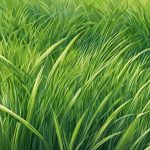Types Of Palms
Palms are a diverse group of plants that are found in various parts of the world. They are known for their unique appearance and are a popular choice for landscaping and indoor decoration. There are over 2,500 species of palm trees, each with its own distinct characteristics and requirements. In this article, we will explore the different types of palms, their classifications, cultural and environmental requirements, common species, and their characteristics, as well as palm care and maintenance.
Classifications of palms are based on various factors, including their size, shape, and growth habits. Palms can be classified into two main groups: those with solitary trunks and those with clustering trunks. Solitary trunk palms have a single trunk, while clustering trunk palms have multiple trunks. Palms can also be classified based on their leaf structure, such as pinnate, fan, or feather-shaped leaves. Understanding these classifications is important in selecting the right type of palm for a particular location.
Cultural and environmental requirements are essential to consider when selecting a palm tree. Palms have specific requirements for light, water, temperature, and soil conditions. Some species of palm trees are more tolerant of cold temperatures, while others require warm, tropical climates. Proper care and maintenance are also crucial in ensuring the health and longevity of palm trees. Understanding these requirements is essential for growing and maintaining a healthy palm tree.
Key Takeaways
- Palms are a diverse group of plants with over 2,500 species.
- Classifications of palms are based on size, shape, and leaf structure.
- Proper cultural and environmental requirements are crucial for growing and maintaining healthy palm trees.
Classifications of Palms

Palms are a diverse group of plants with over 2,500 species, ranging in size from small shrubs to towering trees. They are classified based on various characteristics, including leaf structure, growth rate, and size.
By Leaf Structure
Palms can be classified into two main groups based on their leaf structure: fan-shaped and pinnate. Fan-shaped leaves are flat and fan-like, while pinnate leaves are feather-like and arranged along a central stem.
The Areca palm, for example, has pinnate leaves and is commonly used as an indoor plant. The Bismarck palm, on the other hand, has fan-shaped leaves and is known for its striking blue-gray color.
By Growth Rate
Palms can also be classified based on their growth rate. Some palms grow quickly and can reach their full height in a few years, while others grow slowly and may take decades to reach maturity.
The Foxtail palm, for instance, is a fast-growing palm that can reach a height of 30 feet in just a few years. The Sago palm, on the other hand, is a slow-growing palm that can take up to 50 years to reach its full height of 10 feet.
By Size
Palms can also be classified based on their size. Some palms are small and shrub-like, while others are massive trees that can reach heights of over 100 feet.
The Date palm, for example, is a medium-sized palm that can grow up to 75 feet tall. The Coconut palm, on the other hand, is a large palm that can reach heights of up to 100 feet.
In conclusion, the classification of palms is based on various characteristics, including leaf structure, growth rate, and size. Understanding these classifications can help you choose the right palm for your garden or indoor space.
Cultural and Environmental Requirements
Soil and Water Needs
Palms have specific soil and water requirements that must be met to ensure their healthy growth. Most palm species prefer well-draining soil that is rich in organic matter. The soil should be kept moist but not waterlogged. Overwatering can lead to root rot, which can be fatal to the plant. It is important to note that some palm species are more tolerant of drought than others.
Sunlight and Temperature Tolerances
Palms require full sun to grow and thrive. They do not tolerate shade well. However, some species can tolerate partial shade. It is important to note that the amount of sunlight required by a palm species may vary depending on its natural habitat. For example, palms that grow in subtropical regions may require less sunlight than those that grow in tropical regions.
Temperature is also an important factor in the growth and survival of palm species. Most palm species prefer warm temperatures and cannot tolerate frost. Some species are more tolerant of cold temperatures than others. It is important to research the specific temperature requirements of the palm species before planting.
Climate Adaptability
Palms are adapted to a wide range of climates, from subtropical to tropical regions. Some species can even be grown indoors or in containers. It is important to select a palm species that is adapted to the local climate to ensure its healthy growth. It is also important to note that some palm species are invasive and can cause damage to the local ecosystem. It is recommended to research the potential invasiveness of a palm species before planting.
Common Palm Species and Their Characteristics
There are numerous types of palm trees, each with its own unique characteristics. In this section, we will discuss some of the most common palm species and their distinguishing features.
Ornamental Palms
Ornamental palms are a popular choice for landscaping and indoor decoration. Some of the most common ornamental palm species include:
- European Fan Palm: This is a small, cold-hardy palm that is native to the Mediterranean region. It has fan-shaped leaves and can grow up to 10 feet tall.
- Chinese Fan Palm: This palm is native to China and has large, fan-shaped leaves that can grow up to 6 feet long. It is a popular indoor plant and can also be grown outdoors in warmer climates.
- Kentia Palm: This is a slow-growing palm that is native to Australia. It has long, graceful fronds and can grow up to 40 feet tall. It is a popular indoor plant and is also used in landscaping.
Fruit-Bearing Palms
Fruit-bearing palms are prized for their edible fruits, which are used in a variety of dishes. Some of the most common fruit-bearing palm species include:
- Canary Island Date Palm: This palm is native to the Canary Islands and has large, spiky leaves and clusters of small, sweet dates. It can grow up to 60 feet tall and is often used in landscaping.
- Pygmy Date Palm: This is a small palm that is native to Southeast Asia. It has feathery fronds and produces small, sweet dates. It is a popular indoor plant and can also be grown outdoors in warmer climates.
- Jelly Palm: This palm is native to South America and produces clusters of small, sweet fruits that are used to make jelly. It can grow up to 20 feet tall and is often used in landscaping.
Cold-Hardy Palms
Cold-hardy palms are able to withstand colder temperatures than other palm species. Some of the most common cold-hardy palm species include:
- Washingtonia Filifera: This palm is native to the southwestern United States and has long, thin fronds that can grow up to 15 feet long. It is able to withstand temperatures as low as 15 degrees Fahrenheit.
- Sylvester Palm: This is a cold-hardy palm that is native to the southeastern United States. It has large, fan-shaped leaves and can grow up to 50 feet tall. It is able to withstand temperatures as low as 15 degrees Fahrenheit.
- Mazari Palm: This palm is native to Afghanistan and Pakistan and is able to withstand temperatures as low as 0 degrees Fahrenheit. It has blue-green fronds and can grow up to 30 feet tall.
Other popular palm species include the Bismarckia nobilis, Cabbage Palm, Christmas Palm, California Fan Palm, Mexican Fan Palm, Bamboo Palm, Palmetto Palm, Rhapidophyllum Hystrix, Sabal Palmetto, Royal Palm, Fishtail Palm, Small Palm Trees, Cat Palm, Indoor Palms, Chamaedorea Elegans, Jubaea Chilensis, Brahea Armata, Adonidia, Archontophoenix, and Bottle Palm (Hyophorbe Lagenicaulis). Each of these species has its own unique characteristics and is suited to different growing conditions.
Palm Care and Maintenance
Palm trees are known for their low maintenance and easy care, making them a popular choice for landscaping and indoor decoration. However, proper care and maintenance are still necessary to ensure the health and longevity of these trees. In this section, we will discuss the essential aspects of palm care and maintenance.
Watering and Fertilization
Proper watering is crucial for the health of palm trees. Overwatering can lead to root rot, while underwatering can cause the leaves to turn brown and fall off. It is recommended to water palm trees deeply but infrequently. The frequency of watering depends on various factors such as the type of palm, soil type, and temperature. In general, palm trees require watering once or twice a week.
Fertilization is also essential for the growth and health of palm trees. A balanced fertilizer with an equal ratio of nitrogen, phosphorus, and potassium is recommended. Fertilizers should be applied during the growing season, which is usually from spring to fall. Over-fertilizing can cause damage to the tree, so it is crucial to follow the instructions on the fertilizer package carefully.
Pruning and Cleaning
Pruning is necessary to maintain the shape and size of palm trees. It is recommended to prune dead or damaged fronds regularly. However, it is essential not to remove too many fronds, as this can harm the tree. Pruning should be done carefully to avoid damaging the trunk or the crown of the tree.
Cleaning is also crucial for the health of palm trees. Dust and debris can accumulate on the leaves, which can block sunlight and reduce photosynthesis. It is recommended to clean the leaves regularly with a damp cloth or sponge. This will help the tree to absorb more sunlight and improve its overall health.
Pest and Disease Management
Palm trees are susceptible to various pests and diseases. Some common pests include spider mites, mealybugs, and scale insects. These pests can be controlled by using insecticidal soap or horticultural oil. It is essential to follow the instructions on the product label carefully.
Diseases such as fungal infections and bacterial infections can also affect palm trees. These diseases can be prevented by maintaining proper watering and fertilization, avoiding over-pruning, and keeping the tree clean. If a tree is infected, it is recommended to consult a professional arborist for treatment.
In conclusion, proper care and maintenance are essential for the health and longevity of palm trees. By following the guidelines outlined in this section, you can ensure that your palm tree stays healthy and beautiful for years to come.
Palms in Human Culture
Palms have been an integral part of human culture for centuries, with their uses ranging from food to construction. The palm family (Palmae) is one of the most important plant families in terms of its past and present utility to humankind. If the geographic focus is narrowed to the tropical regions, the importance of the palm family is even more obvious.
The oil palm is a significant crop in many tropical countries, with its oil used for cooking and in the production of soap, margarine, and cosmetics. The sugar cane palm is also an important crop, with its juice used to make sugar and molasses. The fruit of the date palm is a staple food in many Middle Eastern countries, while the coconut palm provides edible fruits and oil, as well as fiber for ropes and mats.
Palms are also used in construction, with their wood being used for furniture, flooring, and building materials. The acai palm is a popular houseplant, while the coconut palm is a cornerstone of many tropical economies, providing communities with food, shelter, and income.
Overall, the palm family has played a significant role in human culture throughout history, with its uses ranging from food to construction.






